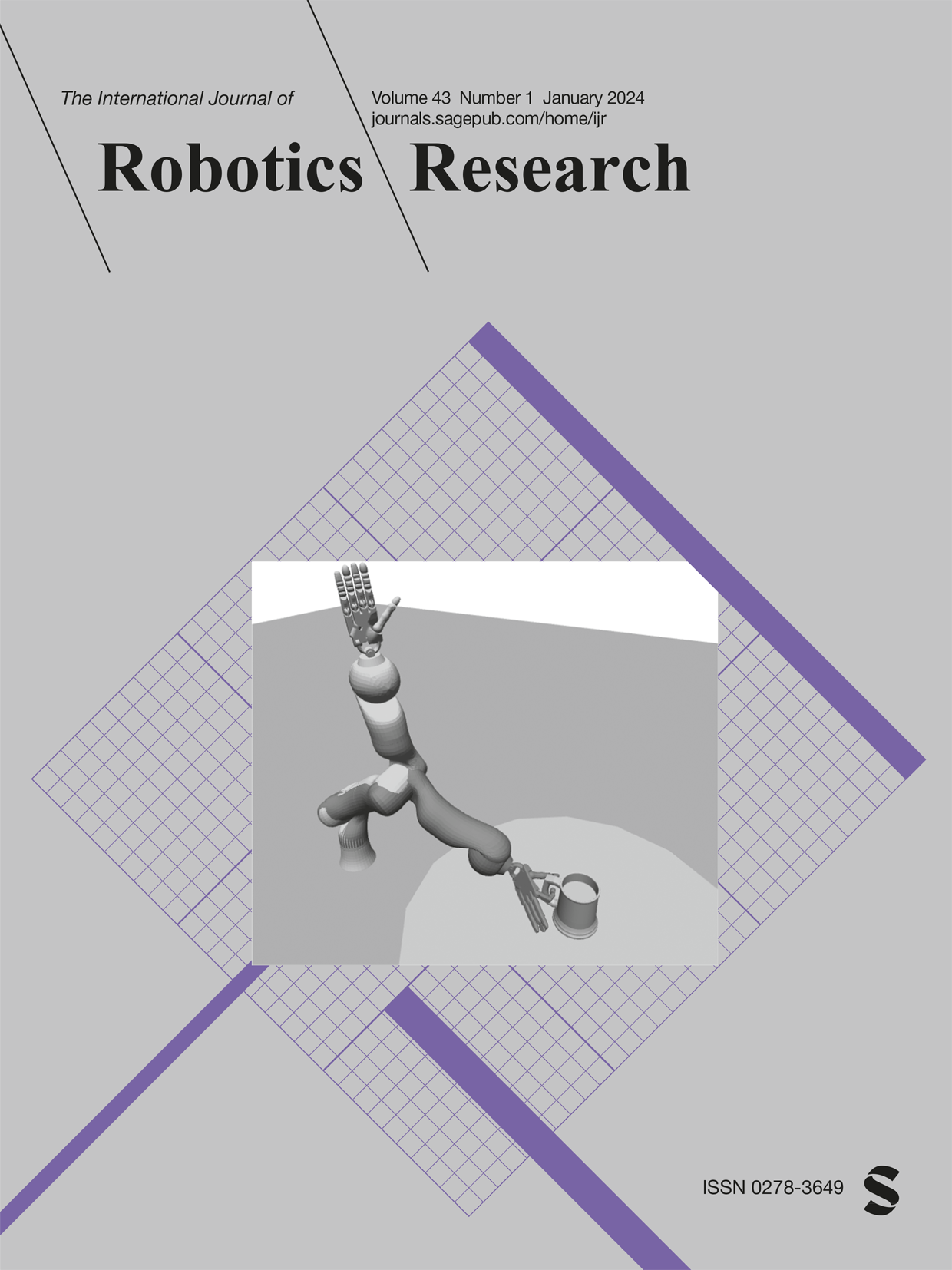DUEL: Depth visUal Ego-motion Learning for autonomous robot obstacle avoidance
IF 5
1区 计算机科学
Q1 ROBOTICS
引用次数: 0
Abstract
Reliable obstacle avoidance, which is essential for safe autonomous robot interaction with the real world, raises various challenges such as difficulties with obstacle perception and latent factor cognition impacting multi-modal obstacle avoidance. In this paper, we propose a Depth visUal Ego-motion Learning (DUEL) model, consisting of a cognitive generation network, a policy decision network and a potential partition network, to learn autonomous obstacle avoidance from expert policies. The DUEL model takes advantage of binocular vision to perceive scene depth. This serves as the input to the cognitive generation network which generates obstacle avoidance policies by maximizing its causal entropy. The policy decision network then optimizes the generation of the policies referring to expert policies. The generated obstacle avoidance policies are simultaneously transferred to the potential partition network to capture the latent factors contained within expert policies and perform multi-modal obstacle avoidance. These three core networks iteratively optimize the multi-modal policies relying on causal entropy and mutual information theorems, which are proven theoretically. Experimental comparisons with state-of-the-art models on 7 metrics demonstrate the effectiveness of the DUEL model. It achieves the best performance with an average ADE (Average Displacement Error) of 0.29 and average FDE (Final Displacement Error) of 0.55 across five different scenarios. Results show that the DUEL model can maintain an average obstacle avoidance success rate of 97% for both simulated and real world scenarios with multiple obstacles, demonstrating its success at capturing latent factors from expert policies. Our source codes are available at https://github.com/ACoTAI/DUEL .决斗:自主机器人避障的深度视觉自我运动学习
可靠避障是自主机器人与现实世界安全交互的关键,但在多模态避障问题上存在障碍感知困难和潜在因素认知困难等诸多挑战。本文提出了一种深度视觉自我运动学习(deep visUal self -motion Learning,简称DUEL)模型,该模型由认知生成网络、策略决策网络和潜在划分网络组成,用于从专家策略中学习自主避障。决斗模型利用双目视觉来感知场景深度。这作为认知生成网络的输入,该网络通过最大化其因果熵来生成避障策略。策略决策网络参照专家策略对策略生成进行优化。生成的避障策略同时传递到潜在分区网络中,捕捉专家策略中包含的潜在因素,进行多模式避障。这三个核心网络依靠因果熵和互信息定理对多模态策略进行迭代优化,并在理论上得到了证明。在7个指标上与最先进的模型进行实验比较,证明了DUEL模型的有效性。在5种不同的情况下,平均ADE(平均位移误差)为0.29,平均FDE(最终位移误差)为0.55,达到了最佳性能。结果表明,无论在模拟场景还是现实场景中,该模型都能保持97%的平均避障成功率,证明了其在捕获专家政策潜在因素方面的成功。我们的源代码可在https://github.com/ACoTAI/DUEL上获得。
本文章由计算机程序翻译,如有差异,请以英文原文为准。
求助全文
约1分钟内获得全文
求助全文
来源期刊
CiteScore
22.20
自引率
0.00%
发文量
34
审稿时长
6-12 weeks
期刊介绍:
The International Journal of Robotics Research (IJRR) has been a leading peer-reviewed publication in the field for over two decades. It holds the distinction of being the first scholarly journal dedicated to robotics research.
IJRR presents cutting-edge and thought-provoking original research papers, articles, and reviews that delve into groundbreaking trends, technical advancements, and theoretical developments in robotics. Renowned scholars and practitioners contribute to its content, offering their expertise and insights. This journal covers a wide range of topics, going beyond narrow technical advancements to encompass various aspects of robotics.
The primary aim of IJRR is to publish work that has lasting value for the scientific and technological advancement of the field. Only original, robust, and practical research that can serve as a foundation for further progress is considered for publication. The focus is on producing content that will remain valuable and relevant over time.
In summary, IJRR stands as a prestigious publication that drives innovation and knowledge in robotics research.

 求助内容:
求助内容: 应助结果提醒方式:
应助结果提醒方式:


